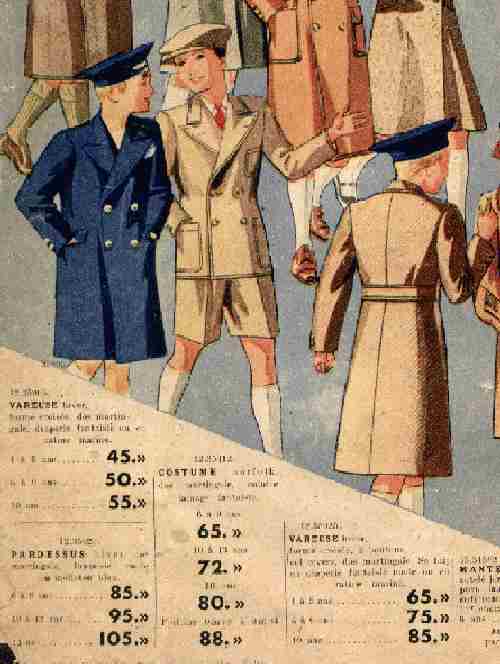
Figure 1.--Mail order clothing catalogs provide useful information about clothing trends in different countrues over time. These school fashions were in a 1936-37 winter catalog. |

|
French mail order catalogs and advertisments help to illustrate destinctive French clothing styles and changes over time in those styles. Currently we have only limited entries here. French readers are incouraged to submiy any old catalogs and periodical advertisements as well as sewing magazines to which they have access We are especially interested in entries that can be dated by year. Our French readers have subpplied quite a few and thus we are developing a good idea of French fashion trends. While until recently recently the accompanying illustrations wre drawings rather than photographs, the ad copy provides us very important information about the age of the children wearibng these garments as well as colors, material, and detailing.
French mail order catalogs offer a great deal of information on specific clothing styles and garments worn over time.worn over time. They are helpful in spotting the unique styles worn by French boys. And accompamying ad copy provide interesing details about the various garments. Currently we are archiving the catalog and advertisement information as well as the sewing magazine infornation primarily in the in the chronologies section, but we will eventually cross index it under garments. This will allow you to easily select a particular garment and see how it has changed over time. It will be some time, however, before this is possible. For the time being we will begin by archieving items that we are unable to date.
French mail order catalogs and advertisements offer a very useful time line on changing fashion trends. I am not sure precisely when mail order catalogs first appeared in France. I know fashionable Paris shops in the 1860s advertised expensive styles foe affluent parents. Clothing advertisements were common in the 1920s. Catalogs were very common in the post-World War II period. We have also added quite a few pages from sewing information which have provided us a great deal of information.
HBC at this time has only limited information on specific French companies. One French reader has mentioned the "La Redoute" catalog was well known throughhout France. The
clothing offered is a good indicator of styles that were widely worn in France and by French people in overseas locations. The some styles were also widely worn in Belgium. A HBC reader reports that the major French department stores were: Les galeries Lafayette,
Au bon Marché (HBC has noted advertising from this store), La Samaritaine, La belle jardinière, Le Louvre, and Le Printemps. Au Louvre was a large department store in the centre of Paris. It was particularly well regarded for its luxury good. Many Americans shop here when visiting Paris.
Some care should be used in assessing the informatin in these pages. We believe that the mail order catalogs and periodical store advertisements are probably the most accurate indivators that a particular garment and style was actually worn by the average French boy. They represented ads for garments that were actually sold and made in some quantity. Companies could loose a lot of money or go out of business if their merchansize did not reflect populat tastes. Thus when a particular garment are styles has appeared over several years or in different sources than this is a good indicator that it was indded commonly worn. The sewing magazines had an element of fashion magazines about them. Mothers may have liked seeing the fashions illustrated even if they did not make and wear them. There was no great loss to the company if a pattern did not prove popular as there was no inventory of garments. Even here, however, a fashion magazine would not continure popular if their pattterns did not include many that mothers could actually make and use.
Catalogs vary in how they do sizing. Some provide sizes in terms of the child's age. This was especially common for younger children. Others stores present sizes in centimeters (cm). Note that this can ve confusing. These lengths in early catalogs were normally for the length of the garment, NOT the heighth of the child. HBC has noted romper and smock sizing, for example, in centimeters. The approximate age conversions would be: 40 cm (12/18 months), 45 cm (2 to 3 years), 50 cm (4 to 5 years), 55 cm (5 to 6 years), 57 cm (7 years), 60 cm (? years), 65 cm (? years), and 70 cm ( ? years). Sizes generally before 1970s were in terms of the length of garments or the age of the children. After the 1970s it was more common to give the height of the children or the age.
Some times fashion magazines and catalogs provide the above sizes. Oher times the following terms for children are used. Some of them are cognates of English words, but they do not always correspond to the English words. Usage has varied somewhat over time, but approximate ages are as follows:
Adolescent: A youth 12 till 15 years old
Bébé: In the first half of the 20th cerntury, the children under 3 were consider as "bébés" (babies). The English word "baby"
might be used to describe fashionable clothes for children this age.
Enfant: A child up to 14 years.
Garçon: School age boy.
Garçoncet: Preschool boy, sometimes used for a boy in the first few years of school.
Jeune: A youth 13 an older through about 18-20, sometime a little older.
Navigate the Boys' Historical Clothing catalog/magazine pages:
[Return to the Main French page]
[Return to the Main country mail order page]
[Main photo/publishing page]
[Store catalogs]
[Fashion magazines]
Navigate the Boys' Historical Clothing Web Site:
[Introduction]
[Activities]
[Bibliographies]
[Biographies]
[Chronology]
[Clothing styles]
[Countries]
[Contributions]
[FAQs]
[French glossaries]
[Images]
[Links]
[Registration]
[Boys' Clothing Home]
Navigate the Boys' Historical Clothing Web Site:
[Sailor suits]
[Sailor hats]
[Buster Brown suits]
[Eton suits]
[Rompers]
[Tunics]
[Smocks]
[Pinafores]
[Postcards]
